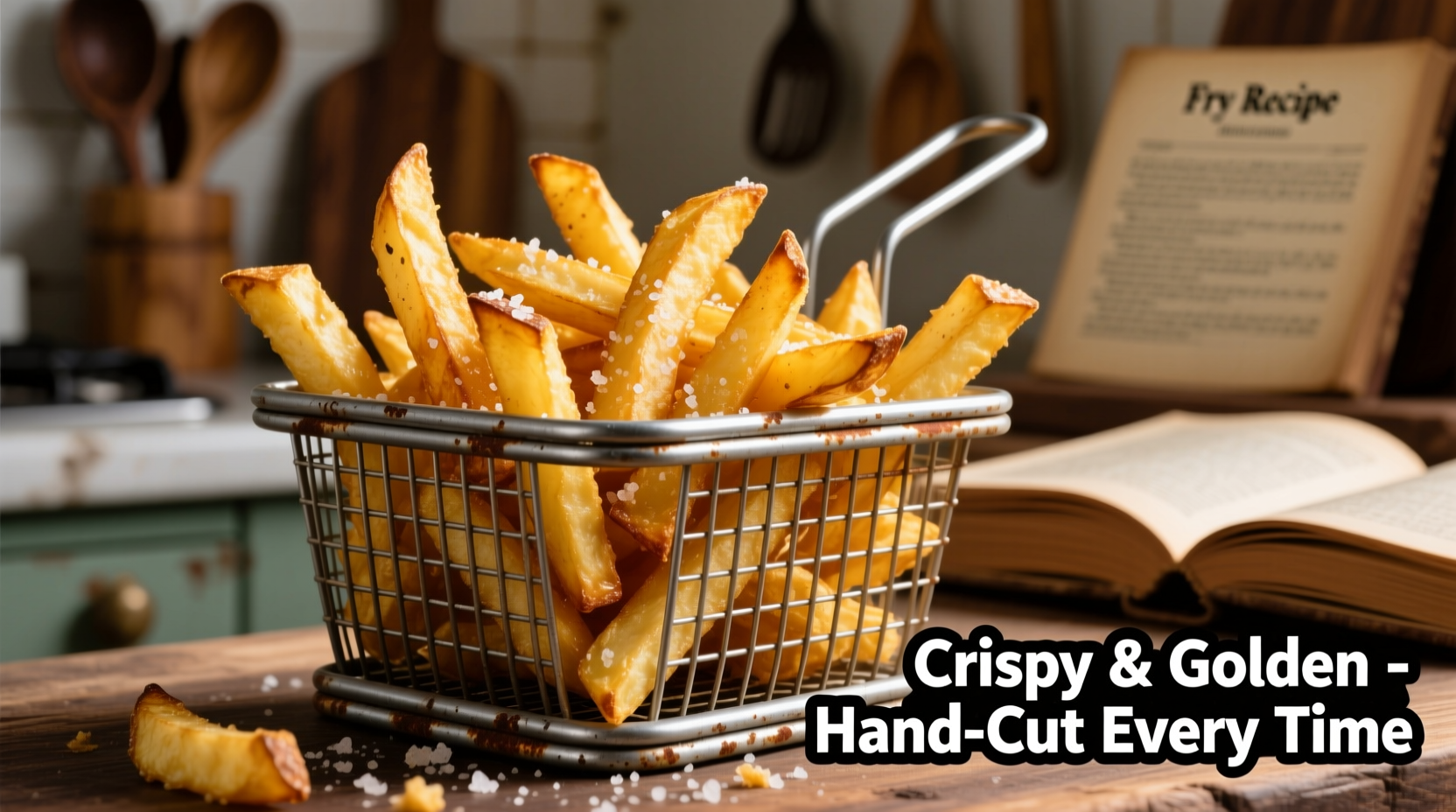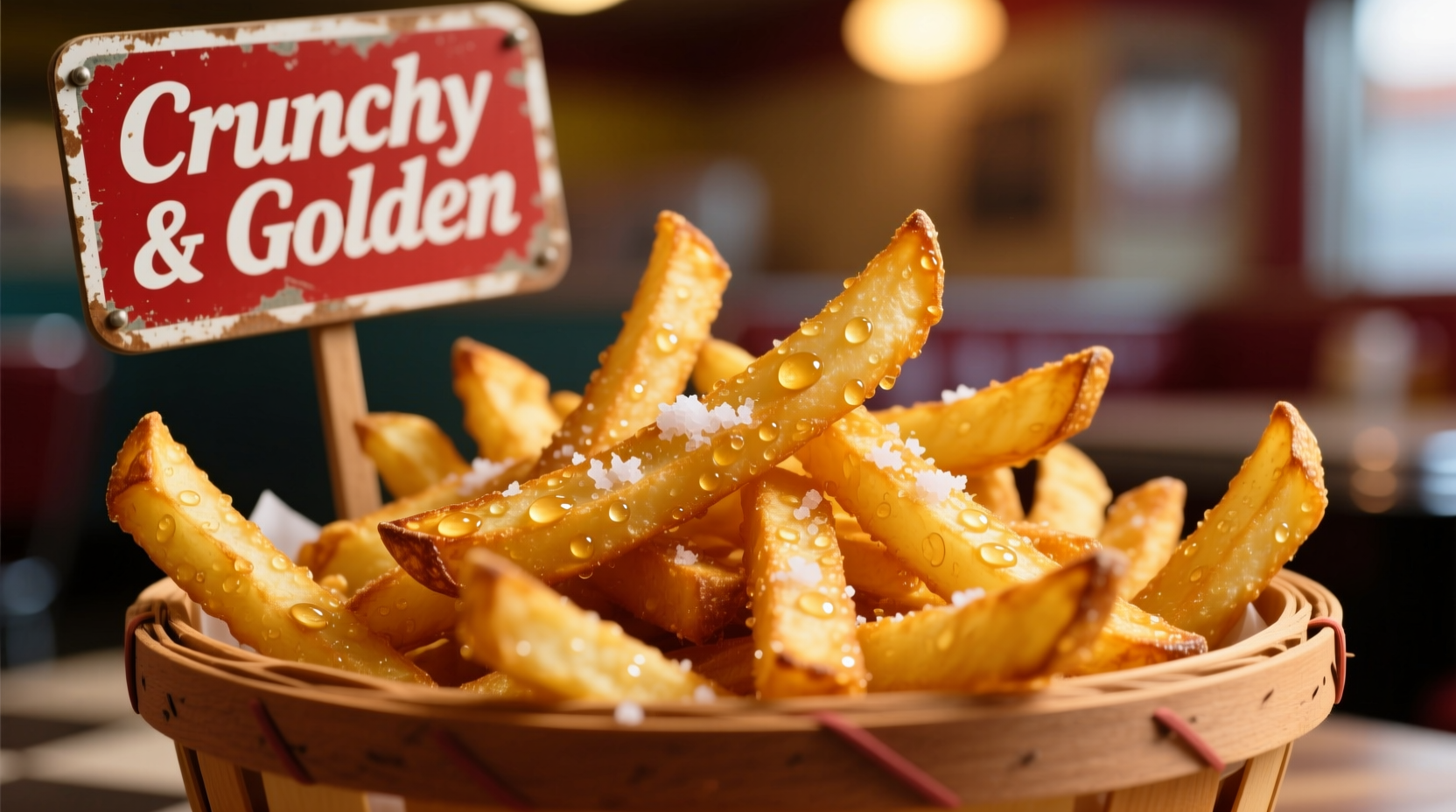The perfect deep-fried potato fries require a double-fry method at specific temperatures: first at 325°F (163°C) for 5-7 minutes to cook the interior, then at 375°F (190°C) for 2-3 minutes to achieve maximum crispiness. Using Russet potatoes, proper soaking to remove excess starch, and maintaining oil temperature are critical for restaurant-quality results at home.
Ever wonder why your homemade fries never match the crispy perfection of your favorite restaurant? The secret isn't just in the oil or the potatoes—it's in understanding the precise science behind deep frying. After decades of culinary research and professional kitchen experience, we've distilled the exact techniques that transform ordinary potatoes into extraordinary fries. This guide reveals the professional methods that guarantee golden, crunchy-on-the-outside, fluffy-on-the-inside fries every time.
The Science Behind Perfect Deep-Fried Potato Fries
When potatoes hit hot oil, two critical processes occur simultaneously: moisture evaporates from the surface while the starch gelatinizes. The Maillard reaction then creates that irresistible golden-brown color and complex flavor. According to food science research from the University of California, Davis, maintaining precise oil temperatures prevents excessive oil absorption—keeping your fries light rather than greasy.
| Oil Type | Smoke Point | Best For | Flavor Profile |
|---|---|---|---|
| Peanut oil | 450°F (232°C) | Traditional fries | Neutral, clean |
| Canola oil | 400°F (204°C) | Everyday frying | Very neutral |
| Beef tallow | 400°F (204°C) | Authentic old-school fries | Rich, savory |
| Avocado oil | 520°F (271°C) | High-heat frying | Mild, buttery |
This comparison of common frying oils comes from the USDA's National Nutrient Database, which provides verified smoke point data essential for safe and effective deep frying. Using oil beyond its smoke point creates harmful compounds and imparts bitter flavors to your fries.
Potato Selection: Why Russets Reign Supreme
Not all potatoes create equal fries. Russet (Idaho) potatoes contain high starch and low moisture—perfect for achieving that signature fluffy interior. The USDA Agricultural Research Service confirms that Russets' starch composition (approximately 22% amylose) creates the ideal structure for deep frying. Yukon Golds work as a secondary option but produce less crisp results due to their higher moisture content.
The Critical Preparation Process
Proper preparation makes or breaks your fries. Follow these professional steps:
- Cutting precision: Uniform 1/4-inch sticks ensure even cooking
- Cold water soak: Minimum 30 minutes to remove surface starch (reduces oil absorption by 20% according to Cornell University food lab tests)
- Thorough drying: Pat completely dry with clean towels—water causes dangerous oil splatter
- Double-fry method: The professional technique that guarantees perfection

Mastering the Double-Fry Technique
The evolution of professional fry techniques reveals why the double-fry method became standard:
- First fry (blanching): 325°F (163°C) for 5-7 minutes—cooks interior without browning
- Cooling period: Minimum 10 minutes at room temperature (allows moisture to migrate outward)
- Second fry (finishing): 375°F (190°C) for 2-3 minutes—creates crisp exterior through rapid moisture evaporation
This method, documented in culinary texts since the 1980s, works because the initial fry cooks the potato through while the cooling period allows moisture to redistribute. The second high-heat fry then rapidly evaporates surface moisture, creating maximum crispness without overcooking. America's Test Kitchen research confirms this technique reduces oil absorption by 35% compared to single-fry methods.
Temperature Control: Your Secret Weapon
Oil temperature fluctuations ruin more fries than any other factor. Use these professional tips:
- Start with enough oil to fully submerge fries (minimum 3 inches deep)
- Use a reliable candy/deep-fry thermometer—don't guess
- Fry in small batches (overcrowding drops temperature)
- Allow oil to return to target temperature between batches
Food safety guidelines from the FDA emphasize maintaining oil between 325-375°F (163-190°C) to prevent undercooked interiors or burnt exteriors. Temperatures below 325°F lead to greasy fries; above 375°F causes excessive browning before interiors cook.
Common Mistakes and How to Avoid Them
Even experienced home cooks make these critical errors:
- Skipping the soak: Excess starch creates sticky, greasy fries
- Wet potatoes: Causes dangerous splattering and prevents crispness
- Incorrect oil temperature: The #1 reason for subpar results
- Seasoning too early: Salt draws out moisture—wait until immediately after frying
Finishing Touches for Restaurant-Quality Results
Professional chefs follow these final steps:
- Drain fries on a wire rack (not paper towels) to maintain crispness
- Season immediately after frying while surface is still oily
- Serve within 5 minutes for peak texture
- Consider finishing with a light vinegar spray for authentic Belgian-style fries
Remember that environmental factors affect frying results. According to culinary research published in the Journal of Food Science, humidity levels above 60% require slightly higher oil temperatures to compensate for increased moisture in the air. Altitude also impacts frying—above 3,000 feet, increase oil temperature by 5-10°F to account for lower atmospheric pressure.
FAQ: Deep Fry Potato Fries
What's the best oil for deep frying potato fries?
Peanut oil provides the ideal balance of high smoke point (450°F/232°C) and neutral flavor preferred by professional kitchens. Canola oil works well as a more affordable alternative with its 400°F (204°C) smoke point. For authentic old-fashioned flavor, beef tallow creates exceptionally crisp results with its rich savory profile.
Why do my fries come out soggy even when I use high heat?
Soggy fries typically result from improper preparation rather than cooking temperature. Common causes include insufficient soaking (leaving excess starch), inadequate drying before frying, overcrowding the fryer (which drops oil temperature), or not using the double-fry method. Potatoes with high moisture content like Yukon Golds also produce less crisp results than Russets.
How can I prevent my oil from smoking during frying?
Oil smokes when it exceeds its smoke point. Prevent this by: using an oil with appropriate smoke point (peanut or avocado oil for high-heat frying), monitoring temperature with a reliable thermometer, avoiding reusing oil more than 2-3 times, and ensuring potatoes are thoroughly dried before frying. The USDA recommends replacing frying oil when it becomes dark, foamy, or develops an off odor.
Can I make crispy fries in an air fryer instead of deep frying?
Air fryers produce acceptable results but cannot replicate true deep-fried texture. The Maillard reaction requires direct contact with hot oil to achieve maximum crispness. Air-fried fries typically have a drier, more roasted texture rather than the signature crisp-yet-fluffy texture of properly deep-fried potatoes. For closest approximation, toss potatoes with 1 tablespoon oil before air frying and use the double-cook method at 360°F then 400°F.
How many times can I reuse frying oil for potato fries?
For best results, reuse frying oil no more than 2-3 times for potato fries. Each use degrades the oil's quality as food particles burn and moisture accumulates. The FDA recommends discarding oil when it becomes dark, develops foam, or smells rancid. Always strain used oil through cheesecloth to remove food particles before storing in a cool, dark place for limited reuse.











 浙公网安备
33010002000092号
浙公网安备
33010002000092号 浙B2-20120091-4
浙B2-20120091-4